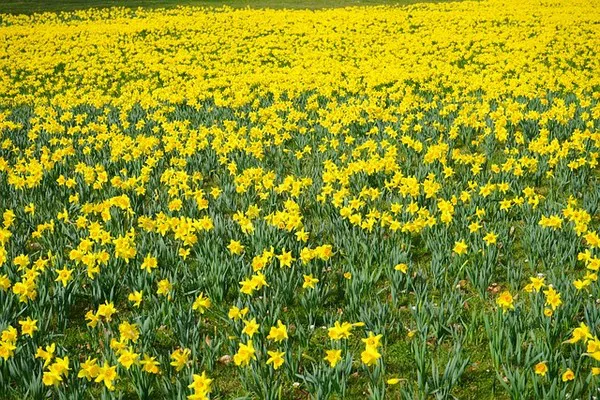Gardening enthusiasts often find themselves locked in a constant battle with nature’s creatures, and deer are no exception. These graceful but voracious herbivores can wreak havoc on gardens, decimating plants and flowers in search of a tasty meal. However, gardeners can gain the upper hand by choosing flowers that deer are known to dislike. In this article, we will explore a diverse selection of deer-resistant flowers, providing gardeners with an array of options to protect their beautiful blooms from these persistent foragers.
See Also: Deer-Resistant Flowers: A Guide to Protecting Your Garden
Understanding the Deer Problem
Deer are creatures of habit, and their dining preferences are influenced by several factors, including their geographical location, seasonal food availability, and local environmental conditions. What they find unpalatable in one area may not hold true in another. Nevertheless, certain flowers consistently rank high on the list of those that deer typically avoid.
The Deer-Resistant Flower Arsenal
Daffodils (Narcissus spp.)
Daffodils are a delightful addition to gardens with their vibrant hues and trumpet-shaped blooms. Their secret weapon against deer is a toxic alkaloid called lycorine, which renders these springtime favorites unappetizing and potentially harmful to the animals.
Foxgloves (Digitalis spp.)
Foxgloves, with their tall spikes of tubular flowers, add vertical interest to gardens. They contain compounds like digitalin that can be toxic to both humans and animals. Deer, in particular, are known to steer clear of these striking perennials.
Lavender (Lavandula spp.)
Known for their fragrant, aromatic foliage and beautiful spikes of purple or blue flowers, lavender plants are not typically on a deer’s menu. The strong scent of lavender may deter deer from approaching these plants, making them a charming and deer-resistant choice.
Coneflowers (Echinacea spp.)
Coneflowers are prized for their striking, daisy-like blooms and hardiness. While they attract pollinators like bees and butterflies, they usually deter deer. These perennial favorites contain compounds that make them less appealing to these herbivores.
Bee Balm (Monarda spp.)
Bee balm, also known as wild bergamot, boasts vibrant, showy blooms and a strong, minty fragrance. Its pungent aroma, derived from essential oils, is often enough to keep deer at bay, making it an excellent addition to deer-resistant gardens.
Yarrow (Achillea spp.)
Yarrow is a hardy perennial with fern-like foliage and flat clusters of tiny flowers. Its bitter taste, coupled with its pungent aroma, makes it an unattractive choice for deer. Yarrow thrives in various growing conditions, further enhancing its garden versatility.
Russian Sage (Perovskia atriplicifolia)
Russian sage is prized for its aromatic, silvery-gray foliage and spires of lavender-blue flowers. The strong scent of this perennial, along with its slightly bitter taste, makes it an unlikely choice for deer grazing.
Butterfly Bush (Buddleia spp.)
Aptly named for its ability to attract butterflies, the butterfly bush rarely attracts deer. Its sweet, nectar-rich flowers are a favorite among pollinators but seem to deter deer, making it an excellent choice for wildlife-friendly gardens.
Salvia (Salvia spp.)
Salvias come in various colors and sizes, and they are renowned for their vibrant, tubular blossoms. These perennials contain aromatic oils that impart a strong fragrance, helping keep deer away from your garden beds.
Marigolds (Tagetes spp.)
Marigolds are colorful annuals known for their resilience and cheerful blooms. Their strong, pungent aroma, particularly from certain cultivars like Tagetes patula, can help deter deer and other garden pests.
Additional Strategies for Deer-Resistant Gardening
While selecting deer-resistant flowers is a critical step in protecting your garden, a multi-pronged approach can further enhance your success in keeping deer at bay:
Diverse Planting: Interplant deer-resistant species with more vulnerable plants to create a visually appealing and deer-deterring garden.
Fencing: Physical barriers such as deer fencing can be an effective way to safeguard your garden from deer intrusion.
Repellents: Consider using natural or commercial deer repellents to discourage deer from approaching your garden. These products can be sprayed on plants and may provide temporary protection.
Garden Design: Opt for garden designs that incorporate hardscapes, such as gravel paths and stone walls, to reduce access points for deer.
Companion Planting: Explore companion planting techniques that utilize the natural characteristics of certain plants to deter deer from your garden. For example, planting aromatic herbs like rosemary and thyme alongside deer-prone species can be an effective strategy.
Do deer eat hibiscus?
Deer are known to browse on a wide variety of plants, and hibiscus is not immune to their appetite. While hibiscus plants are not typically at the top of the list of deer’s preferred food sources, they may occasionally nibble on hibiscus leaves and flowers if other food options are scarce or if the hibiscus is easily accessible.
Conclusion
Gardening enthusiasts need not surrender their beloved blooms to the appetites of roaming deer. By carefully selecting deer-resistant flowers and implementing additional protective measures, such as fencing and natural repellents, gardeners can enjoy a vibrant and flourishing garden while keeping these elegant herbivores at bay. A well-planned garden filled with deer-resistant flowers not only offers visual delight but also provides a sense of accomplishment in outwitting nature’s hungry visitors.


